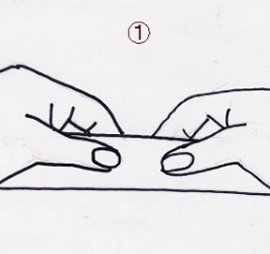ABOUT MY WIREWORKS
<< choosing wire >>
The purpose of wire in making cloisonne is to separate the cells of colored enamel to make a partition and to be outlines of the preliminary drawing.
There are many types of wire, such as round wire or ribbon, and their sizes (diameter or thickness) are diverse.
I would say it is very important to choose the right size of wire when the wire is to be the outline of the design.
In other words, wire size is indeed part of the design. Thick wire will give the artwork a strong and bold impression, but it could spoil organic and soft designs.
As an outline, I try not to let the wire stand out because the motif of my artwork is usually tangible (plants). To achieve the "Is she really using wire??" look, I use custom-made wire (0.04X1.2 mm).
I think it expresses the touch of lively plants very well. However, it could be too weak for abstract or geometric designs.
Therefore I consider choosing the most suitable thickness for one's artwork a very important part of designing.
<< placing wire >>
As we all know, wire is straight. "How can I place the straight wire on a curved surface?". This was the biggest question for me before I started working on 3D objects.
In short, all you have to do is to make the wire curved along the surface. We make it happen with our fingers or with tools such as tweezers. It depends on the individual.
I usually squeeze the wire with my fingers. Theoretically, I stretch the upper half of the wire as well as I shorten the lower half.
First, hold the wire almost on the edge with both your hands as shown in figure-1. Move one hand and pull as if drawing a circle (figure-2).

|

|
Repeat it until you have a suitable and uniform curve. If you pull too hard or fool around too much, the silver wire will eventually get too hard to form any shape.
I don't anneal the wire because the wire gets tensionless and too soft for beautiful curve.
The degree of curves will be different according to how or where the wire is placed. And the wire won't fit to the surface even if it's curved perfectly if you fail to bend it the right way when bending it along the outline with tweezers.
At least 70 to 80% of the wire should be fit to the surface, or it will fall off while being fused into the base by kiln firing.
So sometimes it takes almost an hour to make just one little part work right.
The best I can say about this is "Practice makes perfect". Be patient and don't give up!
to the top page.
